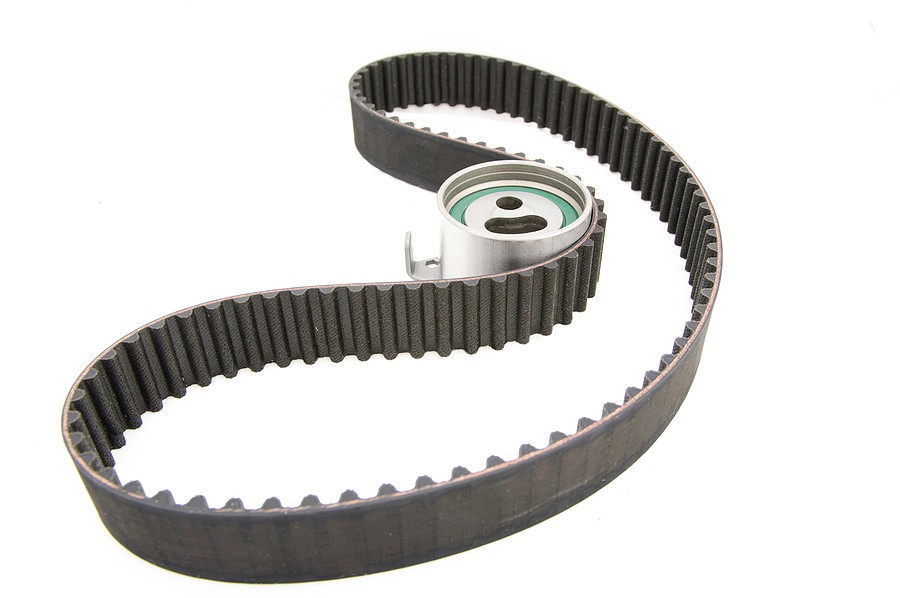In the thrilling world of motoring, few things can be as frustrating as power steering issues that catch you off-guard. Ensuring the smooth operation of your vehicle's power steering system is critical to enjoying a seamless driving experience. This comprehensive guide aims to equip you with the necessary knowledge and tips to troubleshoot power steering issues effectively.

Recognizing Symptoms of Power Steering Problems
Unusual Noises
Power steering systems are generally quiet. A whining or squealing noise might manifest due to a variety of reasons including a low fluid level or a loose belt. These noises are often the first indicator that something is amiss. Addressing the root cause promptly can save you from expensive repairs in the future. Investigate by checking the tension of the belts and the fluid level to ensure everything is functioning optimally.
Heavy Steering
Heavy steering is not just a nuisance; it can also be a safety hazard. It usually indicates issues with the power steering pump or low fluid levels. If you find yourself putting in extra effort to turn the wheel, it's time to check the power steering fluid reservoir. Make sure the pump belts are in good condition and properly tensioned to prevent this problem from recurring.

Steering Wheel Vibrations
Sometimes, you might notice that the steering wheel vibrates excessively, which is not just uncomfortable but also alarming. This can be caused by misaligned wheels or imbalances in the steering system. Regular inspection and proper alignment can mitigate these issues, ensuring a smoother, vibration-free driving experience.
Fluid Leaks
The power steering system relies heavily on hydraulic fluid. Spotting puddles of fluid under your car is a sign that the system is leaking. Identifying the source of the leak early can prevent further complications. Regular inspections can help pinpoint and fix leaks, saving you from costly future repairs.
Essential Tools for Troubleshooting
Wrench Set
Having a good wrench set is almost non-negotiable when it comes to car maintenance. Wrenches help in tightening any loose components and are indispensable in removing and replacing faulty parts. Investing in a quality set can be a game-changer in maintaining your vehicle’s power steering system.

Fluid Funnel
A fluid funnel is a handy tool that facilitates the clean and precise transfer of power steering fluid, minimizing wastage and mess. It assists in maintaining the correct fluid levels, which is vital for the optimum performance of your vehicle.
Jack and Jack Stands
Safety is paramount when working on your vehicle. Jacks and jack stands are essential tools that help elevate your car, allowing for a thorough inspection of the components underneath. It not only makes the process easier but also ensures your safety during the process.
Power Steering Fluid
Maintaining an adequate level of power steering fluid is vital. This special fluid is designed to work under high pressure and temperatures, ensuring smooth steering operations. Regularly check the fluid level and replenish it as necessary to keep the power steering system running seamlessly.
DIY Solutions to Common Problems
Replacing Worn-Out Belts
Belts are integral components of the power steering system. Over time, they can wear out, leading to operational issues. Understanding how to identify and replace worn-out belts is key. Start by inspecting the belts for any signs of wear, cracks, or fraying. The process of replacing these belts is relatively straightforward, but it requires attention to detail to ensure proper installation.
Fixing Fluid Leaks
Fluid leaks can be a persistent issue, leading to a reduction in the system’s efficiency. It's crucial to locate the source of the leak and fix it promptly. Begin by cleaning the area and then start the engine to identify the source of the leak. Once identified, it might require replacing faulty hoses or seals to rectify the problem.
Calibrating Electric Power Steering
In modern vehicles, the electric power steering system has replaced the traditional hydraulic system, offering more precise control. However, this system needs calibration to ensure optimal performance. Calibration involves setting the steering angle and torque sensors to the manufacturer's specifications, ensuring smooth and precise steering responses.
Wheel Alignment
Proper wheel alignment is vital for a smooth and safe driving experience. Over time, wheels can become misaligned due to various factors like hitting potholes or curbs. This misalignment can cause uneven tire wear and a shaky steering wheel. It's advisable to have your wheels aligned by a professional to avoid further complications.

Identifying Underlying Issues
Steering Wheel Slack
Over time, your vehicle's steering mechanism might develop slack, which manifests as a delayed response when you turn the steering wheel. This delay can be a result of wear and tear in the steering gear or linkage. Regular check-ups can identify and rectify any loose components, ensuring that your vehicle responds precisely to your steering inputs.
Difficulty in Turning the Wheel
If you encounter a noticeable difficulty while turning the steering wheel, it might be due to problems with the steering column or issues with the power steering pump. It's essential to inspect these components and repair or replace them as necessary to restore the smooth operation of your steering system.
Unusual Smell
A burning smell emanating from the steering system is a red flag that should not be ignored. This could be a result of overheated fluid or friction from worn-out parts. Identifying and rectifying the source of the smell is critical to prevent potential fires and further damage to the power steering system.

Overheating Power Steering Pump
The power steering pump is susceptible to overheating, especially when the fluid level is low. An overheated pump can cause the power steering system to malfunction. Ensuring that the pump is well-maintained and operates at the correct temperature is vital to the longevity of your power steering system.
Preventative Measures for Longevity
Regular Fluid Checks
Regularly checking the power steering fluid levels is crucial in maintaining the system's efficiency. Ensure that the fluid is clean and at the correct level to facilitate smooth functioning. If necessary, replace the fluid to prevent potential problems.
Timely Belt Replacement
Belts play a pivotal role in the power steering system. They transfer power from the engine to the power steering pump. Ensuring that the belts are in good condition and replacing them at regular intervals prevents unexpected failures and maintains the performance of the power steering system.

Periodic System Flushing
Flushing the power steering system periodically is an excellent practice that removes contaminants and ensures the longevity of the system. This process involves draining the old fluid, cleaning the system, and refilling it with fresh fluid, restoring the system to its optimum condition.
Routine Professional Check-ups
Having your vehicle inspected by professionals at regular intervals can identify potential issues before they escalate. Professionals can offer expert advice and services, ensuring the longevity and smooth operation of your power steering system.
When to Seek Professional Help
Persistent Noises
If the unusual noises persist even after addressing potential causes, it's wise to seek professional assistance. Experts can accurately pinpoint the issue, saving you time and potentially expensive future repairs.
Inconsistent Steering Responses
When your vehicle exhibits inconsistent steering responses, it might indicate a serious underlying issue. If DIY solutions do not rectify the problem, consult with a professional to diagnose and fix the issue, ensuring your safety on the road.

Recurring Fluid Leaks
Recurring fluid leaks are a sign of underlying issues in the power steering system. If the leaks persist even after attempting repairs, it is time to consult with a professional who can identify the source of the problem and provide a lasting solution.
System Overhaul
In cases where the power steering system requires a significant overhaul, it is prudent to rely on professional services. Experts have the necessary tools and expertise to carry out complex repairs and replacements, ensuring the longevity and reliability of your power steering system.
Conclusion: Steering Towards a Safe and Smooth Journey
In the realm of automotive maintenance, being well-informed about the intricacies of your vehicle’s power steering system stands as an essential aspect. Ensuring that this system is functioning optimally not only secures a smooth drive but also protects you from potential hazards and expensive repairs in the future.
From recognizing the initial signs of trouble such as erratic noises or fluid leaks to understanding the vital role of preventative measures, this guide has covered an array of topics that delve deeply into the nuances of troubleshooting power steering issues. Understanding the symptoms and potential causes of power steering problems can equip you with the knowledge to prevent minor issues from escalating into major concerns.

Paving the Way for Preventative Maintenance
By integrating regular checks and maintenance routines into your schedule, you pave the way for a prolonged lifespan and enhanced performance of your vehicle's power steering system. Embracing preventative measures like timely belt replacements and periodic system flushing not only mitigates the risks of unexpected breakdowns but also contributes to a greener environment by minimizing waste and pollution.
Leveraging DIY Solutions
For the avid car enthusiast, this guide offers a glimpse into the world of DIY solutions that can be both a rewarding and cost-effective approach to car maintenance. Armed with the necessary tools and knowledge, you can address a myriad of issues ranging from steering wheel slack to overheating power steering pumps. By adopting a proactive approach, you can ensure the longevity and reliability of your power steering system, saving both time and resources in the long run.
Seeking Professional Expertise
While DIY solutions can resolve many issues, the importance of seeking professional help when necessary cannot be overstated. Professionals bring in a wealth of experience and expertise, ensuring accurate diagnoses and effective solutions. Whether it’s persistent noises or recurring fluid leaks, consulting with a seasoned expert can provide peace of mind and guarantee the safety of your vehicle on the road.
Final Thoughts
As we steer towards the conclusion of this comprehensive guide, it's essential to remember that the journey towards maintaining a healthy power steering system is ongoing. The road may sometimes be bumpy, but with a vigilant eye and a commitment to regular maintenance, you can ensure a safe and smooth journey ahead.
With this, we wrap up our in-depth exploration into troubleshooting power steering issues, hoping that it serves as a reliable companion in your automotive maintenance journey. Here's to many more safe and enjoyable drives ahead!



